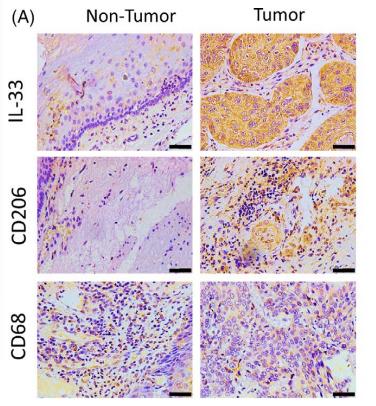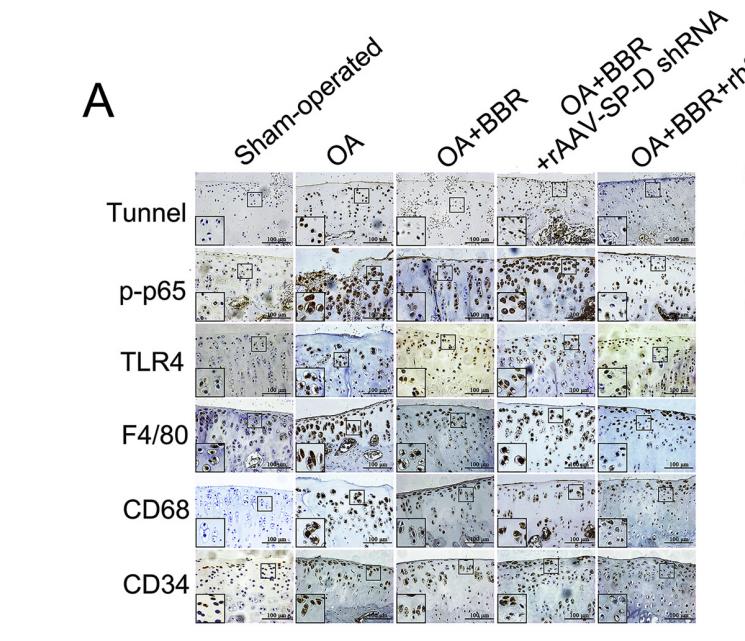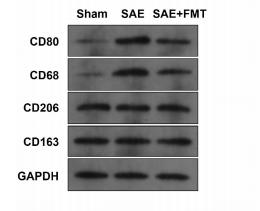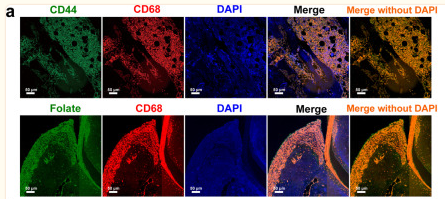产品描述
*The optimal dilutions should be determined by the end user. For optimal experimental results, antibody reuse is not recommended.
*Tips:
WB: 适用于变性蛋白样本的免疫印迹检测. IHC: 适用于组织样本的石蜡(IHC-p)或冰冻(IHC-f)切片样本的免疫组化/荧光检测. IF/ICC: 适用于细胞样本的荧光检测. ELISA(peptide): 适用于抗原肽的ELISA检测.
引用格式: Affinity Biosciences Cat# DF7518, RRID:AB_2841017.
展开/折叠
CD 68; CD68; CD68 antigen; CD68 molecule; CD68_HUMAN; DKFZp686M18236; gp11; Gp110; LAMP4; Macrophage antigen CD68 (microsialin); MACROPHAGE ANTIGEN CD68; Macrosialin; SCARD1; Scavenger receptor class D member 1;
抗原和靶标
A synthesized peptide derived from human CD68, corresponding to a region within the internal amino acids.
研究领域
· Cellular Processes > Transport and catabolism > Lysosome. (View pathway)
文献引用
Application: IF/ICC Species: Rat Sample:
Application: IHC Species: rat Sample: knee joints
限制条款
产品的规格、报价、验证数据请以官网为准,官网链接:www.affbiotech.com | www.affbiotech.cn(简体中文)| www.affbiotech.jp(日本語)产品的数据信息为Affinity所有,未经授权不得收集Affinity官网数据或资料用于商业用途,对抄袭产品数据的行为我们将保留诉诸法律的权利。
产品相关数据会因产品批次、产品检测情况随时调整,如您已订购该产品,请以订购时随货说明书为准,否则请以官网内容为准,官网内容有改动时恕不另行通知。
Affinity保证所销售产品均经过严格质量检测。如您购买的商品在规定时间内出现问题需要售后时,请您在Affinity官方渠道提交售后申请。产品仅供科学研究使用。不用于诊断和治疗。
产品未经授权不得转售。
Affinity Biosciences将不会对在使用我们的产品时可能发生的专利侵权或其他侵权行为负责。Affinity Biosciences, Affinity Biosciences标志和所有其他商标所有权归Affinity Biosciences LTD.
























![Figure 3. MiR-22-3p induces macrophages into the M2 phenotype in ApoE–/– mice fed a high fat diet: (a) immunofluorescence staining (original magnification, × 40, bar = 50 μm) and quantitative analysis of macrophage accumulation and macrophage polarization by detection of (a) the macrophage marker cluster of differentiation (CD)68 and M1 marker inducible nitric oxide synthase (iNOS), and (b) the M2 markers CD206 and arginase (Arg)-1, in aortic sections from MiR-22-3p agomir or normal control (NC) mice; and (c) western blot and quantitative analysis of relative protein levels of the M1 markers (iNOS, interleukin [IL]-6, and tumour necrosis factor [TNF]-α) and M2 markers (Arg1 and CD206) in aortic sections from MiR-22-3p agomir or NC mice. CD68 Antibody - Figure 3.](http://img.affbiotech.cn/uploads/202403/c009a547f3113d92b315dc89b41d49f7.png)








![Figure 8. HCC-1 (hemofiltrate CC chemokine-1) exacerbated atherosclerotic plaque progression and pyroptosis in ApoE−/− mice. ApoE−/− mice treated with adeno-associated virus serotype 9 (AAV9)–mediated overexpression of HCC-1 (AAV9-HCC-1 mice) and the controls (AAV9-control mice) were fed with high-fat diet for 12 weeks. A, Oil red O staining of aorta en face in different groups (control, n=5 vs AAV9-HCC-1, n=4; Mann-Whitney U test, P=0.0159, Shapiro-Wilk test [SW] showed no normal distribution). H&E (hematoxylin-eosin staining; B), oil red O (C), Masson trichrome (D), and sirius red (E) staining and quantification of aortic root cross sections (control, n=8 vs AAV9-HCC-1, n=6; unpaired t test, SW showed normal distribution). Anti-LyC6 antibody–stained (F) and anti-CD68 antibody–stained (G) aortic root cross sections and quantification (control, n=8 vs AAV9-HCC-1, n=6; unpaired t test, SW showed normal distribution). Anti-caspase-1 antibody–stained (H) and TUNEL (terminal deoxynucleotidyl transferase [TdT]-mediated dUTP nick-end labeling)-stained (I) aortic root cross (Continued )sections and quantification (control, n=8 vs AAV9-HCC-1, n=6; unpaired t test, SW showed normal distribution). Anti-NF-κB (nuclear factor-κB) antibody–stained (J) and anti-NLRP3 (NLR family pyrin domain containing 3) antibody–stained (K) aortic root cross sections and quantification (control, n=8 vs AAV9-HCC-1, n=6; unpaired t test, SW showed normal distribution). Serum levels of TNF-α (tumor necrosis factor-α; L) and IL (interleukin)-1β (M) in mice (control, n=8 vs AAV9-HCC-1, n=6; unpaired t test, SW showed normal distribution). Data were exhibited as mean±SD. Scale bar=100 µm CD68 Antibody - Figure 8.](http://img.affbiotech.cn/uploads/202512/8c54a4d23a1dc4b8ac5f73c0ddbf7b0e.png)